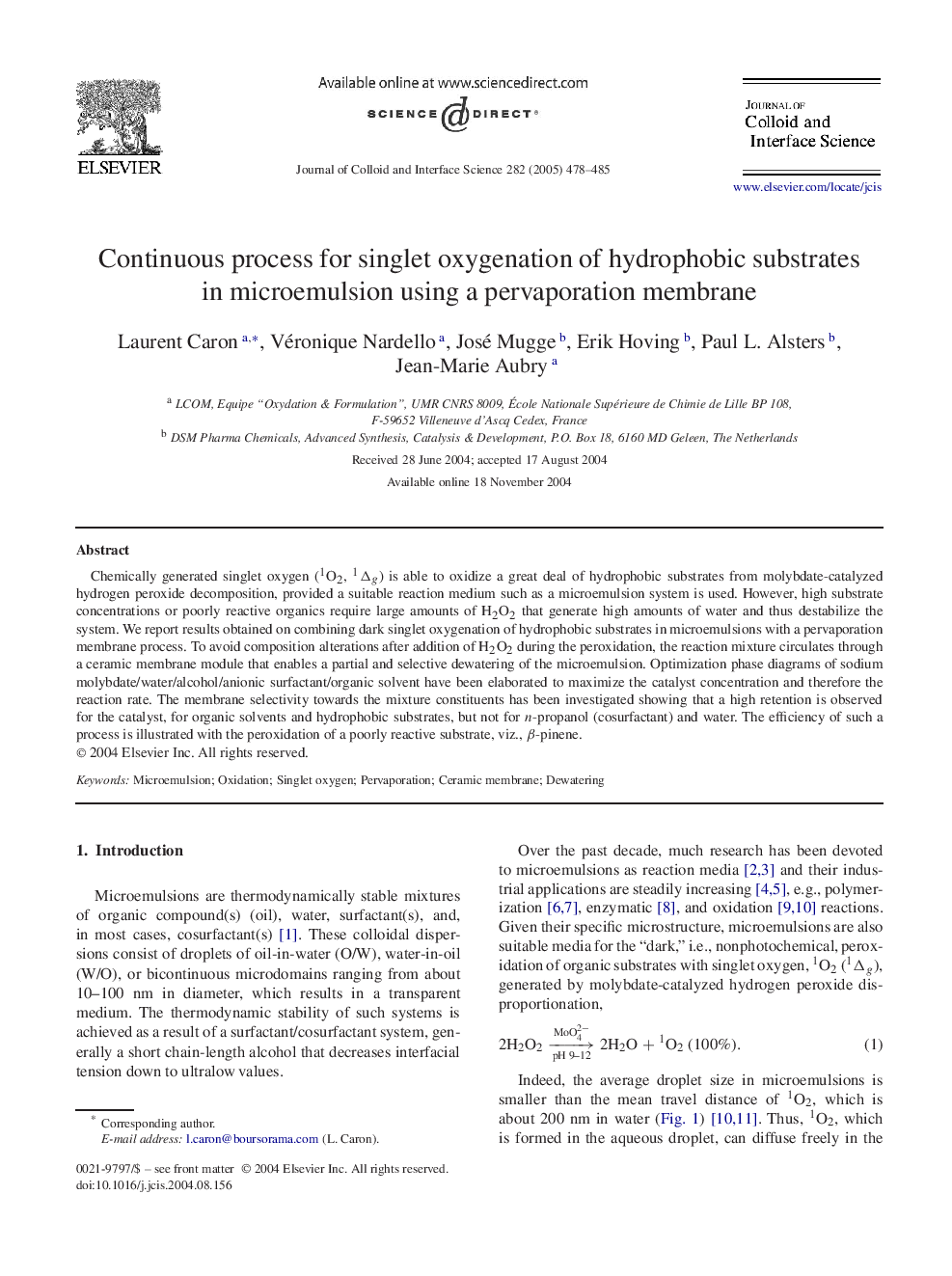| Article ID | Journal | Published Year | Pages | File Type |
|---|---|---|---|---|
| 10378789 | Journal of Colloid and Interface Science | 2005 | 8 Pages |
Abstract
Chemically generated singlet oxygen (1O2, Îg1) is able to oxidize a great deal of hydrophobic substrates from molybdate-catalyzed hydrogen peroxide decomposition, provided a suitable reaction medium such as a microemulsion system is used. However, high substrate concentrations or poorly reactive organics require large amounts of H2O2 that generate high amounts of water and thus destabilize the system. We report results obtained on combining dark singlet oxygenation of hydrophobic substrates in microemulsions with a pervaporation membrane process. To avoid composition alterations after addition of H2O2 during the peroxidation, the reaction mixture circulates through a ceramic membrane module that enables a partial and selective dewatering of the microemulsion. Optimization phase diagrams of sodium molybdate/water/alcohol/anionic surfactant/organic solvent have been elaborated to maximize the catalyst concentration and therefore the reaction rate. The membrane selectivity towards the mixture constituents has been investigated showing that a high retention is observed for the catalyst, for organic solvents and hydrophobic substrates, but not for n-propanol (cosurfactant) and water. The efficiency of such a process is illustrated with the peroxidation of a poorly reactive substrate, viz., β-pinene.
Related Topics
Physical Sciences and Engineering
Chemical Engineering
Colloid and Surface Chemistry
Authors
Laurent Caron, Véronique Nardello, José Mugge, Erik Hoving, Paul L. Alsters, Jean-Marie Aubry,
